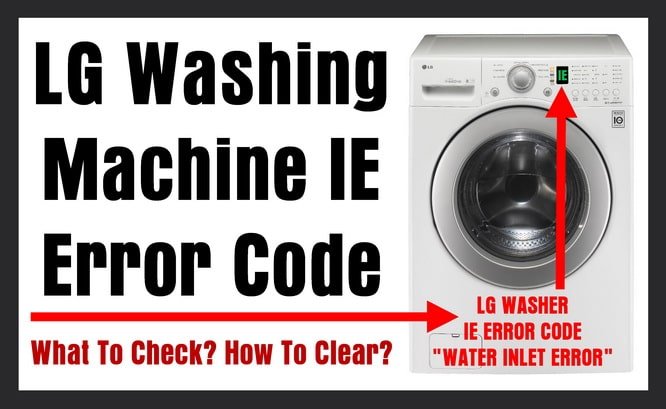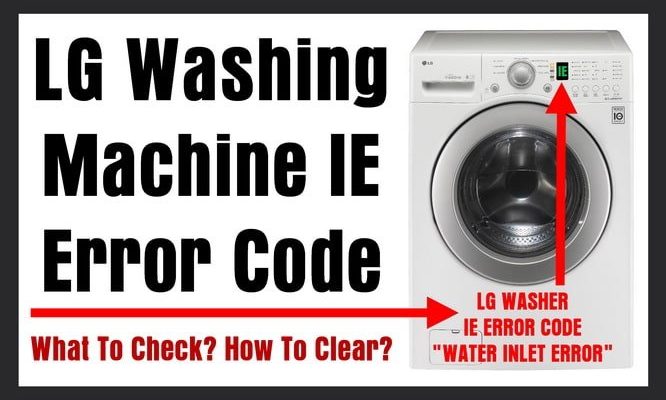
Understanding Error Code E3 on LG Washing Machines
When your LG washing machine displays an error code E3, it’s essentially sending a signal that there’s something amiss with the motor. Imagine if your car’s engine light comes on—it doesn’t always mean something catastrophic, but it’s a prompt to check things out. In this case, the E3 error could be due to various reasons like an overloaded drum, a faulty motor sensor, or simply a glitch in the machine’s electronics.
It’s important to remember that washing machines are like intricate puzzles; every piece (or part) needs to work in harmony. The motor, being a key component that powers the drum’s motion, is crucial for your machine’s operation. If it faces resistance or any internal issue, it can result in performance hiccups such as this error code. But, before you panic or consider buying a new machine, know that there are several ways to tackle this issue.
First, consider whether the drum was too full. Overloading is a common cause of the E3 error; it strains the motor, making it difficult for it to turn. Try removing some items and see if this helps. Other potential causes include imbalanced loads, which can often be resolved by rearranging the clothes within the drum to get an even distribution.
How Resetting Your Washing Machine May Help
Now, here’s the deal: when it comes to tackling the E3 error code, resetting your LG washing machine can sometimes be exactly what the doctor ordered. Think of it like rebooting your computer when it freezes. Resetting the washer can clear minor electronic glitches that might have caused the error to appear in the first place.
To reset your LG washing machine, start by turning off the appliance and unplugging it from the power source. Wait for about 10 to 15 minutes. This pause gives the machine enough time to power down completely. Afterward, plug it back in, turn it on, and see if the error persists. It’s like giving your machine a chance to catch its breath and start afresh.
However, while resetting might clear the error code, it’s not a cure-all remedy. If the problem is recurrent, it indicates there might be a more serious underlying issue that needs attention. But, trying a reset is still a cost-free first step that could save you time and a call to the repair technician.
What If Resetting Doesn’t Solve the Problem?
Let’s say you’ve tried resetting your machine but that pesky E3 code keeps coming back. Don’t despair just yet—there are other steps you can take. First, inspect the motor itself. If you’re comfortable with basic DIY tasks, check if there are any visible obstructions or loose wires. Sometimes, the motor sensor might need a quick look to ensure it’s functioning properly.
If you’re not sure about handling these components, it might be time to call in a professional. An experienced technician can diagnose deeper mechanical or electronic faults. For those who are more hands-on, you might consider consulting your washing machine’s manual. These booklets often contain troubleshooting tips and diagrams that can help you pinpoint the issue.
During these checks, keep an eye out for any unusual sounds or vibrations. These can be clues that some components might be worn out or misaligned. If you do notice anything out of the ordinary, detailing these observations to a technician can help them diagnose the problem faster and more accurately.
Preventing Future Error Codes
Prevention, as they say, is better than cure. To avoid running into the error code E3 in the future, regular care and maintenance of your washing machine can make a big difference. Start by ensuring you don’t overload the machine. Most importantly, balance your loads to prevent unnecessary strain on the motor.
Another tip is to regularly clean your washing machine. It might sound odd—cleaning a machine that’s constantly washing—but residue from detergent and minerals can build up over time, affecting the machine’s performance. Run an empty wash cycle with a machine cleaner or a mix of vinegar and baking soda every few months to keep things fresh.
Lastly, keep an eye on the machine’s leveling. If your washer isn’t perfectly level, it could affect the spin cycle, resulting in errors. Adjust the feet of your machine so that it’s stable and squared on the floor. With these simple steps, you can keep your washing machine running smoothly and minimize the chances of unwelcome error codes appearing.
In conclusion, while resetting your LG washing machine can be a helpful first step in resolving an E3 error, it’s important to recognize when professional help is needed. By understanding the causes and maintaining your machine, you can ensure it serves you efficiently for many years to come.
